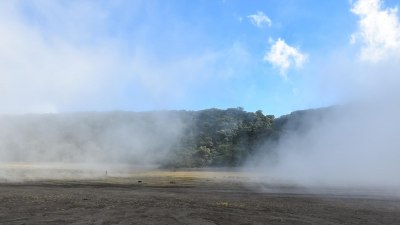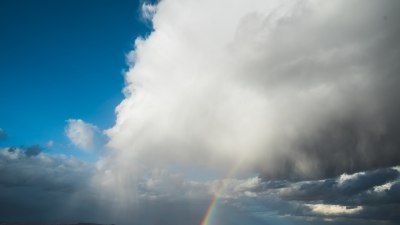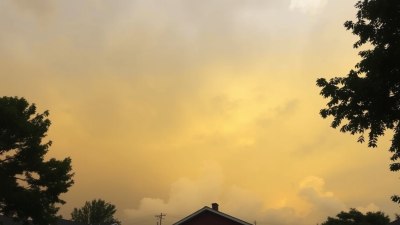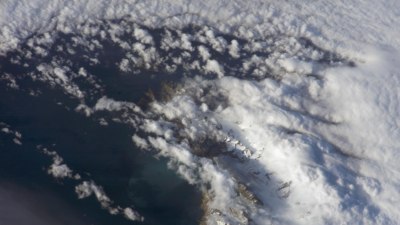What Makes the Ground Steam After a Cold Night
Discover the science behind ground steaming after chilly nights and its fascinating atmospheric effects.

As the sun rises after a particularly cold night, observers often witness a remarkable phenomenon: steam rising from the ground. This might seem like an illusion, but it’s grounded in fascinating science that involves temperature differences, humidity, and condensation. Understanding what makes the ground steam after a cold night includes exploring several key atmospheric principles and environmental conditions.
When nighttime temperatures drop significantly, the ground cools rapidly, especially if the sky is clear and the winds are light. This cooling process can lead to a considerable temperature differential between the ground and the air above it. When the ground temperature falls below the dew point of the surrounding air, condensation begins to take place, leading to the steam-like appearance often observed in the morning.
Understanding the Dew Point
The dew point is the temperature at which air becomes saturated with moisture. When air cools and reaches this temperature, the moisture within it condenses into tiny droplets or ice crystals, depending on the ambient temperature. In colder conditions, this moisture condenses rapidly, especially when the ground is significantly cooler than the surrounding air, leading to visible steam or fog.
During the night, the ground loses heat through a process called radiation cooling. This process involves heat escaping into the atmosphere, lowering the ground temperature. As the ground cools down, the warmer, more humid air above it does not cool as quickly; thus, when the sun rises and begins to warm the surface, the combination of these contrasting temperatures can create a dramatic visual display.
Temperature Inversions and Their Role
Moreover, temperature inversions can exacerbate this steaming phenomenon. A temperature inversion occurs when a layer of warm air traps cooler air near the ground. Under such conditions, the cold ground can become isolated, and as it cools down, it may drop to temperatures where steam formation becomes evident as the warmer air above it holds more moisture. Inversions are particularly common in valleys, where cold air sinks and is trapped beneath warmer air layers.
Importance of Humidity
Another critical factor in ground steaming is humidity. The amount of moisture in the air influences the degree to which steam will form. High humidity means more moisture is available for condensation, meaning that the warmer air can create more noticeable steam or fog. In contrast, if the humidity is low, the air is less saturated, and consequently, less steam will form even under similar temperature conditions.
The interaction of humidity with temperature, especially during colder nights, is significant. If a clear night follows a day with high humidity, you’re more likely to see ground steam the following morning. Conversely, after cold nights with drier air, there may be little to no observable steam, underscoring this relationship further.
When Is Ground Steaming Most Likely to Occur?
Ground steaming is most commonly seen under specific conditions. Late autumn and winter months are prime times for witnessing this event, especially when a clear sky allows for uninterrupted radiation cooling overnight. Geographic location also plays a vital role; those living in humid climates may experience ground steam more frequently compared to arid regions where moisture is less abundant.
Time of day also matters, as ground steaming is most noticeable shortly after dawn when the sun begins to heat the cold ground, causing the moisture trapped in the nearby air to condense rapidly. In particularly cold areas, the phenomenon can persist well into the morning or even afternoon under specific conditions.
Environmental Impact of Ground Steaming
The occurrence of ground steaming is not just a visual curiosity; it plays a role in local microclimates as well. The visibility of steam can indicate higher humidity levels in the atmosphere, which might influence local weather patterns. Areas that experience consistent ground steam might also observe slightly different microclimates due to the presence of moisture in the air, which can affect temperature stability and other environmental factors.
Implications for Agriculture
For farmers and those involved in agriculture, ground steaming can have implications too. Moisture accumulation and the presence of fog or steam can affect dew formation and soil moisture levels, influencing irrigation practices and planting schedules. Understanding local weather patterns and steam occurrences can provide valuable insights for optimizing agricultural productivity and sustainability.
A Beautiful Science
In conclusion, what makes the ground steam after a cold night results from an intricate interplay of temperature, humidity, and environmental conditions. This phenomenon serves as a reminder of the complexities of our atmosphere and the beauty of nature's processes. As we observe the steam rising from the ground, we not only appreciate a captivating sight but also gain insights into the sciences that govern our daily weather experiences.











